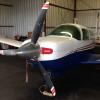Red box
-
Members Online
- hammdo
- kortopates
- larryb
- 1980Mooney
- LANCECASPER
- AJ88V
- Guy123
- PT20J
- Andy95W
- varlajo
- bigmo
- AndreiC
- shawn-201zb
- patrickf
- BrentS
- Fredo0709
- TeshDar
- IvanP
- eman1200
- Larry
- Ed de C.
- David AD
- Yanyen
- crustymuffin
- UteM20F
- Slick Nick
- Patrick Horan
- Jakes Simmons
- TCC
- Neshi
- affricate
- raymondscott0321
- Sabremech
- Healthpilot
- Tmooney
- VetRepp
- Pinecone
- Meshach
- Ibra
- Mikey30V
- Ron McBride
- PeteMc
- Chaseford10
- Zippy_Bird


Recommended Posts
Join the conversation
You can post now and register later. If you have an account, sign in now to post with your account.